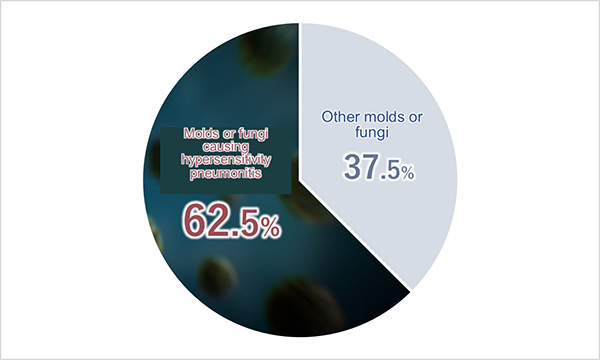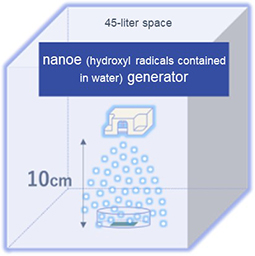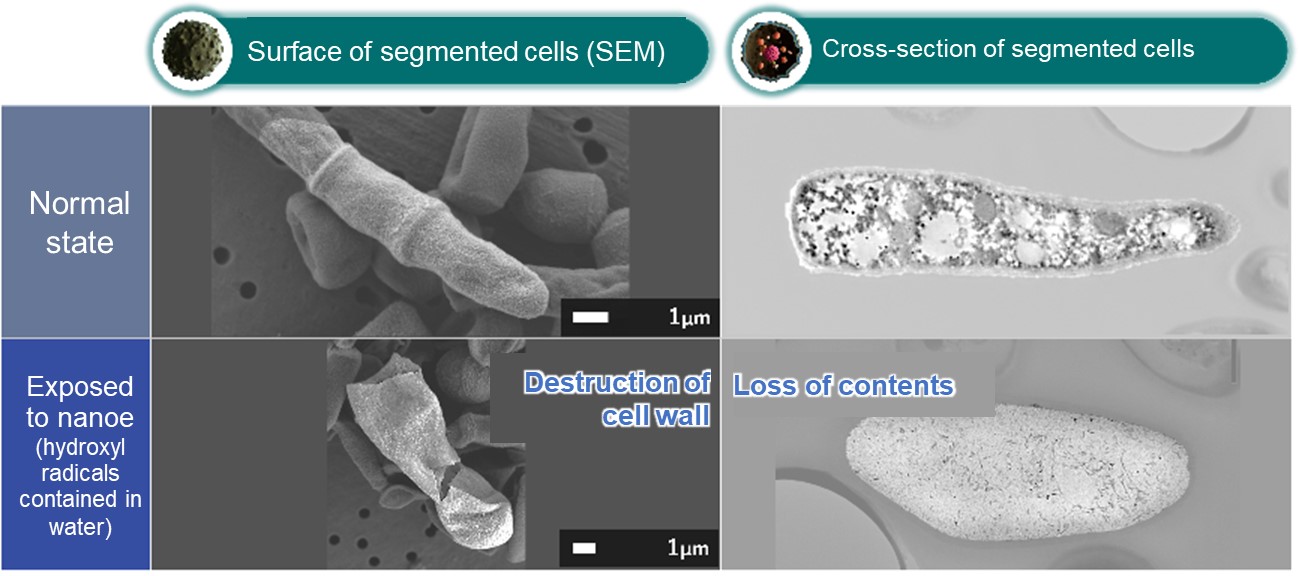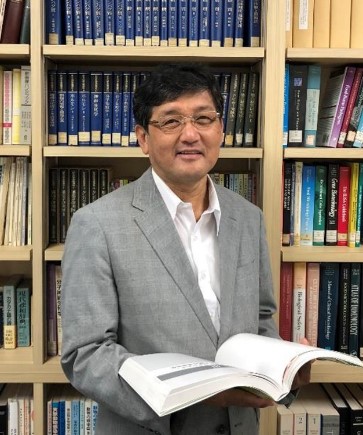Pathogenic Fungus 99% Sterilized by nanoe (Hydroxyl Radicals Contained in Water)
Published on by Water Network Research, Official research team of The Water Network in Technology
Osaka, Japan – Panasonic Corporation ("Panasonic") (https://www.panasonic.com/global/home.html) today announced that, under the supervision of Dr. Masafumi Mukamoto, Professor Emeritus of Osaka Metropolitan University, the company has confirmed the sterilizing effect of nanoe (hydroxyl radicals contained in water) on Trichosporon, a fungus that is a major cause of hypersensitivity pneumonitis.
Hypersensitivity pneumonitis is a disease caused by repeated inhalation of spores released into the air by molds or fungi. Its symptoms are mainly coughs and fever, similar to a cold or viral infection, and in fact, 70% of patients surveyed had been diagnosed with another illness such as the common cold.*2 Another distinctive aspect is that symptoms appear only in environments where spores can be inhaled, such as inside a house, with symptoms improving when the patient leaves the house. The number of patients suffering from summer-type hypersensitivity pneumonitis, which occurs in Japan especially in August when humidity is higher, is on the rise.*3Summer-type hypersensitivity pneumonitis accounts for 70% of hypersensitivity pneumonitis.
The sterilizing effect of nanoe (hydroxyl radicals contained in water) on eight major household fungi or molds,*4 and on three untested harmful molds*5 had been demonstrated previously, and the sterilization mechanism partially identified.*5 However, its efficacy against Trichosporon, a fungus that is a major cause of hypersensitivity pneumonitis, had not yet been verified.

Figure 1: Sterilization effect on Trichosporon
Thus, a new test was conducted to verify its effectiveness against Trichosporon, which confirmed a sterilization effect of 99% or more. Combined with the previous verification results, the experiment proved that nanoe (hydroxyl radicals contained in water) are effective in sterilizing all three types of pathogenic molds or fungus*1 that account for 70% of the causes of hypersensitivity pneumonitis. Note that this verification was conducted under the test conditions described below, and does not necessarily verify the effectiveness of nanoe in actual spaces where it is used.
Panasonic is committed to the ongoing advancement of nanoe (hydroxyl radicals contained in water) technology and the pursuit of its potential to contribute to society by providing safe and secure spaces.
■Key points of verification testing
A survey on the proportion of irritable pneumonia-causing molds in the air in general households found that molds causing hypersensitivity pneumonitis were detected in 62.5% of surveyed cases (Verified Data 1)
The sterilizing effect of nanoe (hydroxyl radicals contained in water) on Trichosporon, a
a fungus that is a major cause of hypersensitivity pneumonitis, was verified and found to be 99% or more effective (Verified Data 2)A morphological observation of Trichosporon fungus exposed to nanoe (hydroxyl radicals contained in water) confirmed that the sterilizing mechanism works by destroying the cell wall, causing the contents to leak out (Verified Data 3)
■Verified Data 1

Figure 2: Survey of airborne molds or fungi in general households
- Verifying organization: TechnoSuruga Laboratory
- Object of verification: Air samples from the living rooms of eight general households collected by air samplers
- Results of verification: As shown in Figure 2 below, molds or fungi causing hypersensitivity pneumonitis were identified in 62.5% of the general households surveyed.
■Verified Data 2

- Verifying organization: Kitasato Research Center for Environmental Science
- Object of verification: Trichosporon, Cladosporium, Candida
- Verification device: nanoe (hydroxyl radicals contained in water) generator
- Verification method: A nanoe (hydroxyl radicals contained in water) generator was positioned at 10 cm from the floor inside a 45-liter test space.
A petri dish containing the test object was placed inside, and after it was exposed to nanoe (hydroxyl radicals contained in water) for a specified period of time, both a count of viable fungal cells and morphological observation were conducted using a scanning electron microscope. - Results of verification: After viable Trichosporon fungus cells exposed to nanoe (hydroxyl radicals contained in water) were counted, it was confirmed to be 99% or more effective in sterilizing these cells. In addition, morphological observation confirmed that the sterilizing mechanism works by destroying the cell wall, causing the contents to leak out.

Figure 3: Count of viable pathogenic fungus after exposure to nanoe
(hydroxyl radicals contained in water)

Figure 4: Morphological changes of pathogenic molds after exposure to nanoe
(hydroxyl radicals contained in water)

Figure 5: Morphological changes of pathogenic molds (budding cells) after exposure to nanoe
(hydroxyl radicals contained in water)

Figure 6: Morphological changes of pathogenic molds (segmented cells) after exposure to nanoe
(hydroxyl radicals contained in water)
■Comment from Dr. Masafumi Mukamoto, Professor Emeritus of Osaka Metropolitan University

Trichosporon and other fungi that cause hypersensitivity pneumonitis, much like other molds, prefer a hot and humid environment, and are found in abundance in most households. This is why hypersensitivity pneumonitis has the potential to affect any of us living in our homes. Those at particular risk include anyone working from home, whose numbers have increased since the COVID-19 pandemic, and homemakers who spend a lot of time in the home on a daily basis. I think it is truly significant that we were able to verify the inhibitory effect of nanoe (hydroxyl radicals contained in water) technology on pathogenic fungus that causes hypersensitivity pneumonitis.
■Principle of generating nanoe (hydroxyl radicals contained in water)

Figure 7. nanoe (hydroxyl radicals contained in water) generator
The atomizing electrode is cooled by a Peltier element, which condenses moisture in the air to create water. Afterwards, a high voltage is applied across the atomizing electrode and the opposite electrode to generate hydroxyl radicals contained in water that contain OH radicals of approximately 5 to 20 nanometers in size. (Figure 7)
Attached link
https://news.panasonic.com/global/press/en240625-3Taxonomy
- Purification
- Water Purification
- Purification Specialist